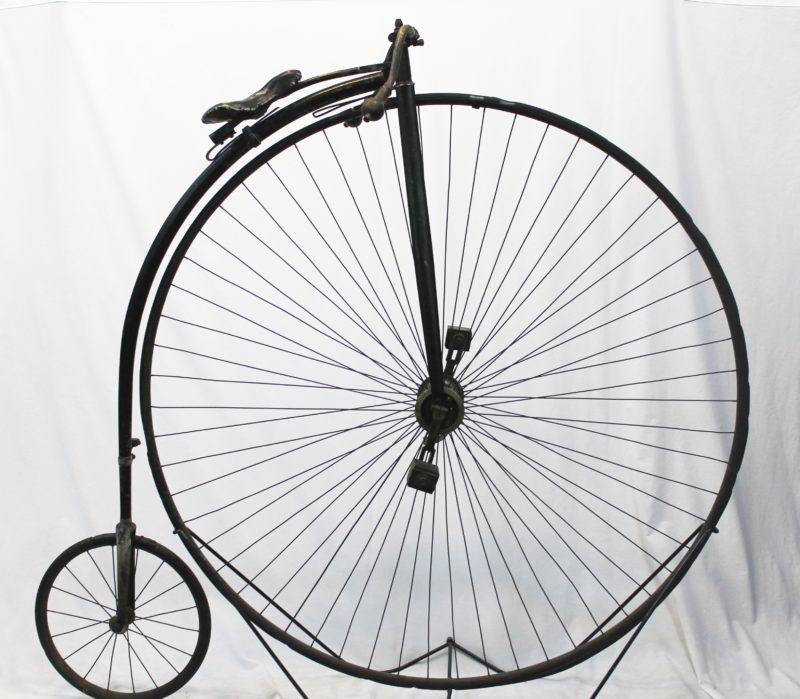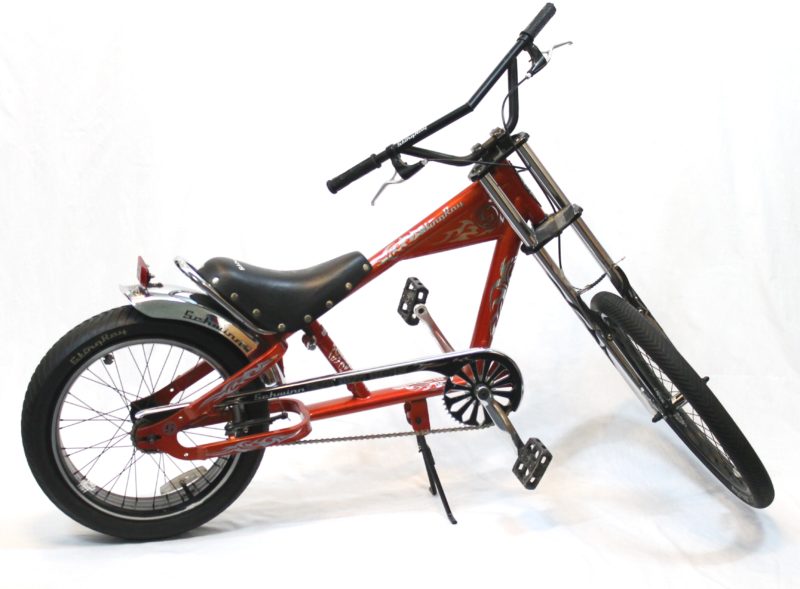

Sparta, Wisconsin is the Bicycling Capital of America with the first Rails to Trails Program in the country in which old railroad tracks were converted in to bike trails. We celebrate this bicycling history spanning more than 200 years with over 80 bicycle on display featuring the very first bicycles to the amazingly innovative bicycles of today.
Historians generally agree that Baron Karl von Drais of Germany made the first prototype that evolved into the bicycle we have today. He unveiled his “hobby-horse” or “Draisine” to the public in 1817. It was propelled solely by the rider’s feet because it had no pedals and was originally invented to replace the horse. With various public exhibitions, he proved that travel time could be cut in half or better, depending on the roads. Despite the advanced travel time it provided, the Draisine never gained great popularity.
In 1867 Pierre Michaux of Paris designed a bicycle with pedals and cranks attached to the front wheel. He called it the “velocipede”, and people began to ride different versions of this bicycle throughout cities in Europe. His machine was made completely of metal and weighed about 70 pounds. Despite some versions of the velocipede that had seats supported by springs, the construction of this model made the ride very uncomfortable and it gained the title of “boneshaker”.
By the 1880s the “penny-farthing” or “high wheel” evolved as the next bicycle design, and it gained great popularity around the world, especially in Britain. The high wheel’s unique design enabled it to go farther with each revolution of the front wheel and thus travel was even faster, although driving it on poor road conditions was extremely dangerous. Improvements such as the air filled rubber tires and a brake helped create such a bicycling craze that some other businesses suffered as a result. Safety was an issue with the high wheel, and despite the high speeds it could reach, the bike eventually fell out of favor because of the severe injuries sustained by many of its riders.
When both wheels on the bicycle became the same size, usually 28 or 29 inches, and driven by a chain sprocket, the “safety bicycle” was born. Bicycling became so popular by the 1890s many machine shops began to manufacture bicycles. Chicago alone had about 400 makers at the height of demand. This also made the bicycle much more accessible for women, and it played a significant role in the women’s rights movement. The safety bicycle is the model that most of our current bicycles take after today.
Over the decades not only did the bicycle evolve, but it was adapted to fulfill different functions. Folding paratrooper bicycles were used in World War II. Cargo cycles were created to transport goods. Ice bicycles were crafted to travel in extremely cold environments. Tandem bicycles were made to accommodate multiple riders. Fiberglass bicycles were designed to weigh very little but be very strong.
Bicycles demonstrate that there is truly no limit to human ingenuity. Visit the museum and explore our amazing bicycle collection for yourself.

- 1970 – Celerifere
- 1817 – Draisienne or Laufmaschine
- 1818 – Johnson’s Ladies Walking Machine
- 1820 – Reproduction of Draisienne
- 1866 – Serpentine Velocipede
- 1869 – Michaux Velocipede/ Boneshaker
- 1871 – Penny Farthing
- 1879 – Lawson Bicyclette
- 1885 – Starley Rover
- 1942 – B.S.A Folding Bicycle
- 1960 – Schwinn Panther III
- 1988 – Schwinn Paramount – 50th Anniversary Limited Edition
- 2008 – Yamaha PAS (Power Assist System) Brace Electric Bike
